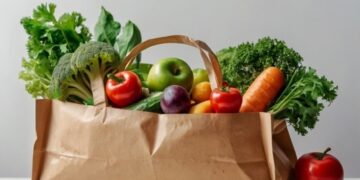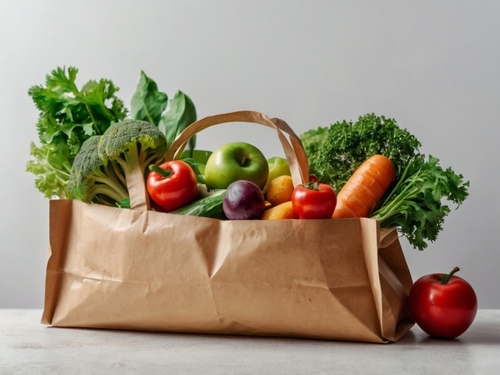Healthy Doesn’t Have to Mean Expensive
There’s a common belief that eating well comes with a high price tag. Organic labels, trendy superfoods, specialty powders—they can make “healthy eating” feel more like a luxury than a lifestyle. But here’s the truth: clean eating isn’t about expensive products. It’s about simplicity. It’s about real, minimally processed ingredients—foods that nourish the body without draining the bank account.
Eating clean on a budget isn’t just possible—it’s deeply practical when you lean into seasonality, whole ingredients, and a bit of planning. The goal isn’t perfection or fancy labels. It’s about making the most of what you have, choosing foods that are as close to their natural state as possible, and stretching every dollar without compromising your health.
Ad Banner #1
Placeholder for the first ad.
Redefining “Clean” Food
Let’s clear something up: clean eating doesn’t require boutique markets or rare ingredients. At its core, it’s about minimizing ultra-processed items and focusing on foods that are rich in nutrients—whole grains, legumes, vegetables, fruits, and healthy fats like olive oil or seeds.
Canned beans, frozen vegetables, and oats might not look glamorous on Instagram, but they’re nutrient-dense powerhouses. In fact, they often retain more vitamins and minerals than their “fresh” counterparts that have traveled thousands of miles. A pantry stocked with these essentials can form the backbone of countless affordable, nourishing meals.
The Power of Planning
The first real strategy for budget-conscious clean eating is planning. A loose weekly menu can make a huge difference. Not only does it help you avoid impulse purchases, but it also reduces food waste—a hidden cost that adds up quickly. That bunch of kale wilting in the back of the fridge? That’s money quietly slipping away.
When you plan, you shop with intention. You build meals around overlapping ingredients. Roasted sweet potatoes for dinner one night become the filling in a grain bowl the next. Cook once, eat twice. Or three times. This kind of efficiency isn’t just about saving money—it’s about saving time and energy too.
Seasonal, Local, and Smart Substitutions
Eating in season is one of the simplest ways to keep your grocery bill low while getting the most flavor and nutrition from your produce. In-season fruits and vegetables are often more affordable, fresher, and better-tasting. If fresh produce feels out of reach, frozen options are a budget-friendly backup that still offer fiber, vitamins, and minerals—without the risk of spoilage.
Also, flexibility is key. Recipes aren’t contracts—they’re templates. Swap pricier ingredients for more affordable ones: brown rice instead of quinoa, cabbage instead of kale, lentils instead of meat. The body doesn’t care if your salad had arugula or spinach. It cares that it’s getting chlorophyll, antioxidants, and fiber.
Ad Banner #2
Placeholder for the second ad.
Bulk Buys and Pantry Staples
Staple foods like brown rice, lentils, rolled oats, and dried beans offer an incredible nutrition-to-cost ratio. Buying in bulk—whether by weight or in larger packages—can bring the per-serving price down significantly. A few dollars spent on a bag of dried legumes can yield meals for a week.
A well-stocked pantry is like a safety net. With the right basics on hand, you’re always a few ingredients away from a solid, healthy meal. Add in a few versatile herbs and spices, and suddenly the same ingredients can take on a dozen different flavors.
Leftovers: The Unsung Hero
Learning to love leftovers is a game-changer. Batch-cooking grains or stews, roasting a tray of vegetables, or preparing a big pot of soup can provide the base for multiple meals. With a little creativity, last night’s dinner becomes today’s wrap filling or tomorrow’s hearty salad topper.
When you treat leftovers as building blocks instead of afterthoughts, your kitchen becomes a place of resourcefulness. And that mindset is at the heart of clean eating on a budget.
The Emotional Shift: From Scarcity to Abundance
Framing clean eating as a form of lack—less sugar, less convenience, fewer processed options—misses the point. In truth, eating this way is about abundance. More fiber. More flavor. More nourishment. When you start seeing whole foods as deeply satisfying rather than restrictive, everything shifts.
Budget-friendly clean eating isn’t about going without. It’s about going deeper. Deeper into simplicity. Into flavor. Into meals that fill you up and support your body in the most essential way.
Let the Simple Things Guide You
You don’t need a fancy pantry or gourmet skills to eat well. Sometimes it starts with something as small as cooking a pot of rice and chopping a few vegetables. A homemade lentil stew. A handful of roasted carrots. A breakfast of oats and fruit. These are the quiet meals that ground you—both physically and financially.
Look at what’s already in your kitchen. What can you build with it? What can you prep for tomorrow? Which ingredient can stretch into multiple meals? These small shifts become habits. And those habits become a lifestyle.



























